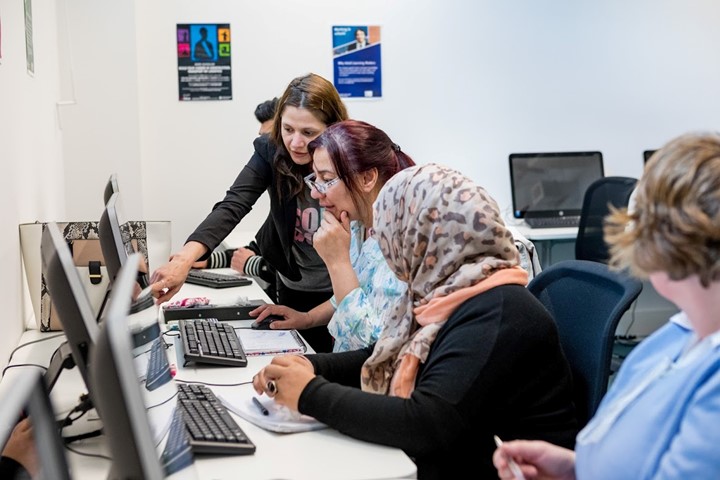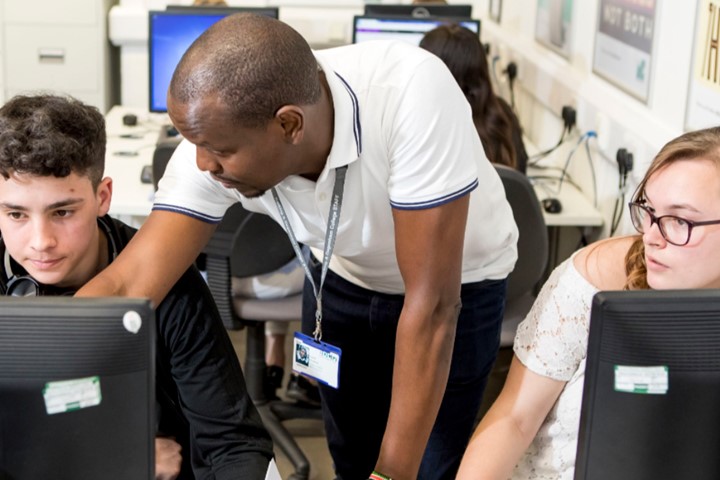The impact of digital literacy in educational spaces
Article written by Tom Brialey, the Managing Director of Action Storage, specialising in the manufacture, supply and installation of a wide range of shelving, lockers and racking.
In March 2017 the House of Lords Communications Committee called for schools to place a far greater emphasis on the importance of digital literacy - proposing it sit alongside reading, writing and mathematics as the “fourth pillar” of education.
Much of life in the 21st century takes place in the online sphere and, by nurturing digital skills and educating school and further education (FE) students on the risks associated with life online, educational providers can ensure students leave higher education with a varied and valuable skill set.
In higher education, there are opportunities galore for teachers and heads to champion technological literacy in pursuit of a more digitally engaged generation. Today, the school locker manufacturers at Action Storage are exploring the simple and effective ways you can make digital development a key part of your establishment’s curriculum.
Incorporate tech into traditional education
Rather than existing parallel to traditional literacy and mathematics, digital literacy can instead be seamlessly introduced to these age-old areas of the curriculum. Some providers are expanding on maths lessons by educating classes on relevant Microsoft Excel functionality, or bringing laptops into the classroom so that students can combine writing tasks with a chance to brush up on their digital proficiency. This allows their students to develop in other key areas, while picking up the sorts of fundamental IT skills likely to serve them well whatever they choose to do next.
Trade textbooks for search engines
Study is the foundation of learning, and there’s ample room for IT to be incorporated into numerous areas of traditional study. In some instances, educators are giving their classes opportunities to become increasingly comfortable with everyday tech tasks by asking them to open browsers rather than textbooks - sometimes even conducting tutorials on advanced Google searches. By identifying authoritative online resources related to their area of study, you could ensure that students are learning from credible sources while continuing to nurture their digital capabilities.
Install laptop charging lockers
Encouraging students to embrace digital literacy comes with some conditions - namely, that they’ll need convenient access to all the relevant tools and facilities. Whether you’re providing onsite storage for students’ personal lockers or kitting your establishment out with an assortment of state-of-the-art tech, to do digital literacy right, you’ll need to ensure that students are fully equipped at all times. Laptop charging lockers in particular offer a multipurpose solution - meaning classes can easily access machines and expand their digital skill sets.
Nurture subject-specific digital literacy
One crucial benefit that comes with championing digital literacy is that students can be prepared for life beyond higher education, and equipped with the technological skills that may serve them well in their careers. Consider introducing business students to basic accounting software or allowing creative writing enthusiasts to get to grips with apps like Evernote. For every specialist subject, there’s an opportunity to give classes an introduction to the programmes and applications designed with these disciplines in mind.
Run extracurricular digital literacy classes
From Microsoft Office and Adobe software to cyber security and computer science, focused classes offer a simple and elegant solution to encouraging digital literacy within the education sector. By introducing these regular sessions, some schools are allowing students to continuously update their IT proficiency, and choose classes which suit their personal interests and ambitions beyond higher education.
From incorporating technology into established, literacy-based activities to providing onsite facilities where students can store their personal laptops, championing digital literacy isn’t about leaving traditional education by the wayside. Instead, it’s about allowing the technological side of 21st century learning to complement existing education plans, and empowering students to continue their digital education outside of the classroom.




